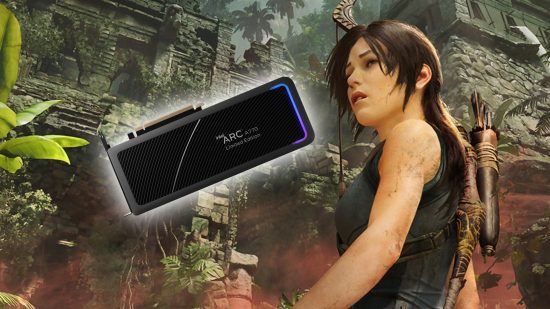Intel XeSS has arrived, as the Nvidia DLSS upscaling competitor is now available in Shadow of the Tomb Raider. Unlike the green team’s RTX offering, the GPU tool is compatible with GeForce and AMD Radeon graphics cards, so you won’t need to wait for the Arc A770 to benefit from the tech.
According to the latest Shadow of the Tomb Raider patch notes on Steam, the new Intel XeSS update adds support for “DX12-compatible systems.” Support for the upscaler seemingly arrived at the same time as yesterday’s Arc A770 release date announcement, but you won’t need to wait for the Arc Alchemist card’s October debut to try it out.
Enthusiasts and benchmarkers are already putting Intel XeSS to the test, as Capframex stats highlight Radeon RX 6800 XT support. The GPU tool’s performance mode helps the RDNA 2 card to boost fps with ultra ray tracing settings enabled, with figures reaching around 75 frames per second.

Shadow of the Tomb Raider may be the first to gain Intel XeSS, but the company plans to roll out support to 20 additional releases, including Modern Warfare 2, Death Stranding: Director’s Cut, and Gotham Knights. An SDK is also available to download right now on Github, so modders could potentially inject it into other games.
Intel isn’t necessarily gunning for the best graphics card crown when it comes to specs, but its Arc A770 will debut alongside the RTX 4090 on October 12. While the flagship won’t trade blows with RTX 4000 or AMD RDNA 3 GPUs, its low price and cheap gaming PC capabilities could help the company gain footing within the scene.
Of course, the future of Arc hinges on the A770’s success against its main rival, the RTX 3060. By harnessing the power of XeSS, the card might win over budget builders much like Nvidia DLSS has, which in turn will justify the release of Battlemage, Celestrial, and Druid successors. If all goes to plan, we may see a new Intel graphics card every year until 2025, but it’s ultimately up to Alchemist to make sure that happens.
